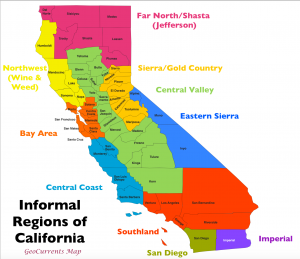

California, home to nearly 40 million people, has commonly been declared ungovernable.
That’s why some people think we should carve it up.
In contrast to the so-called Calexit movement, which aspires to secession, these proponents see California’s salvation in greater local autonomy within the union.
A few years ago, a bid to create six states out of California drew wide media attention but ultimately fizzled.
Now, the architect of that effort, a tech billionaire named Timothy C. Draper, is back with another idea: three Californias. He submitted paperwork that would put the question before voters in 2018.
“No one can argue that California’s government is doing a good job governing or educating or building infrastructure for its people,” Mr. Draper said in an email. “And it doesn’t matter which party is in place.”
The three Californias would have roughly equivalent populations and wealth. A state of Northern California would include almost the entire upper half of the state, including San Francisco; a Southern California would contain most of the rest.
A third state, called simply California, would fold in Los Angeles and extend up the coast to Monterey.
The proposal’s odds are extreme. Even if voters got behind it, the state Legislature would have to approve it, and then the U.S. Congress, which would have to be convinced to let blue California add four additional senators.
Still, it’s irresistible to ponder the idea of multiple Californias.
Martin W. Lewis, a geographer at Stanford University, said Mr. Draper’s plan was striking in its seeming disregard for regional identities. Monterey, for example, which looks toward San Francisco, would be unlikely to welcome its absorption into a state whose epicenter is Los Angeles.
“That just seems wrong to me,” he said.

As an intellectual exercise, Dr. Lewis last year created a map of his own that plots 10 California regions, bound by an array of shared characteristics. Among them, “Sierra/Gold Country” has its common prospecting history, “Northwest” its boutique agricultural products, and “Imperial” a heavy Hispanic population.
In a two-California scenario, putting aside the water issues, it might seem logical to simply separate north and south.
But Dr. Lewis said that another division had become ascendant in the minds of many residents. He cited the alienation of Republican-leaning counties like those in the far north, where the breakaway movement State of Jefferson has wide allegiance.
“It’s clear now,” he said, “that the real political divide separates the coastal counties from most of the interior counties.”






























